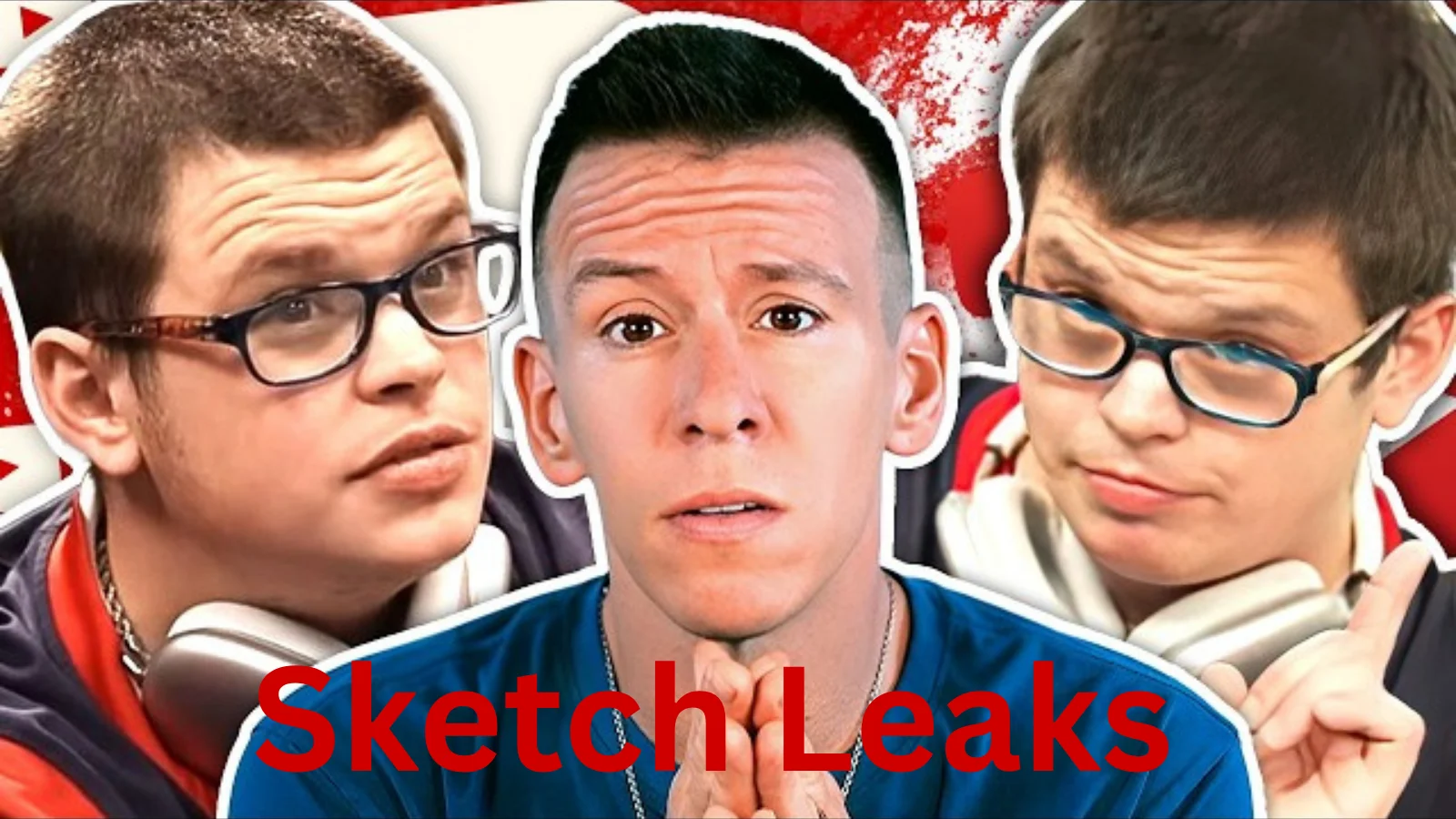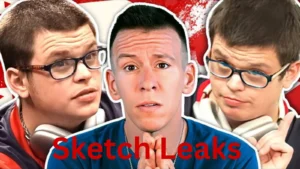The term “Sketch leaks” has recently seen a surge in search volume, capturing the interest of both tech professionals and internet users looking for exclusive digital content. Whether you’re a designer looking for insider info on Sketch app updates or a curious browser misled by viral gossip posts, this article will help you understand what “Sketch leaks” actually means — and why people are obsessing over it.
In this deep-dive, we’ll explore different interpretations of the term “Sketch leaks,” the role of leak culture in digital industries, how rumors spread, and what users should really be looking for when they type this phrase into Google.
What Does “Sketch Leaks” Actually Mean?
Depending on who you ask, “Sketch leaks” can refer to two very different things. For the tech-savvy crowd, it usually means leaked information about the Sketch app — a powerful vector-based design tool used for UI/UX design. This might include early access features, unreleased plug-ins, or confidential beta tools that were shared before an official update. Designers constantly search for these leaks to stay ahead of the competition, especially in the fast-paced world of app and web design.
On the other hand, “Sketch leaks” may also refer to leaked personal content, especially if there is an influencer or digital creator known as “Sketch” or who uses that name as part of their brand. This version of the term often stems from gossip-driven forums or Reddit threads, where users speculate about behind-the-scenes footage, private media, or sensational rumors. It’s crucial to clarify the difference — one is about software and innovation, the other often involves unverified and potentially unethical content.
Sketch App Leaks: Unreleased Features and Beta Rumors
For years, Sketch has been a go-to platform for designers building apps, websites, and digital experiences. With Adobe XD and Figma rising as competitors, Sketch has had to evolve quickly. This has led to high user interest in leaked information about its roadmap. When internal mockups, interface screenshots, or unreleased features slip out online, they often get labeled as “Sketch leaks.” Designers search eagerly for these to prepare workflows or build plug-ins ahead of launch.
Some of the most common types of Sketch leaks include cloud collaboration upgrades, animation tools, dark mode themes, and new export formats. While these leaks often come from beta testers or accidental releases in changelogs, some are speculative. It’s important to take all leak-related info with a grain of salt — not all are confirmed or reliable, and some are intentionally seeded to test user reactions.
Influencers and the Misunderstanding Behind “Sketch Leaks”
A portion of the “Sketch leaks” traffic also stems from people who think the term refers to content leaks involving individuals or influencers. This might be due to social media personalities using “Sketch” as a nickname or brand. In those cases, users are often searching for leaked photos, videos, or drama-related content that may or may not exist. Unfortunately, many third-party websites and YouTube thumbnails exploit this trend for ad clicks, even when no real content has been leaked.
This version of the “Sketch leaks” phenomenon is more about curiosity than fact. People are drawn to rumors, especially when they involve private or controversial material. However, searching for or consuming non-consensual leaked content crosses ethical boundaries — and in some cases, may involve legal risks, especially if the media was shared without permission.
How Leak Culture Influences Tech and Social Media
Leak culture has become a central part of both tech and entertainment industries. Whether it’s iPhone specs surfacing months before release or a celebrity’s private messages going viral, the internet thrives on early access and exclusivity. In the case of Sketch, designers want a sneak peek at new tools. In the case of influencers, followers want unfiltered insight into their private lives. Both are fueled by the same desire — to get something before it’s officially out.
The problem is that not all leaks are legitimate or harmless. Some are planned PR moves by companies to stir hype, while others are stolen or fabricated by individuals with bad intent. This makes it harder for everyday users to separate fact from fiction. Just because something is labeled a “leak” doesn’t mean it’s real — and even if it is, that doesn’t always mean it should be shared.
Are “Sketch Leaks” Real or Just Clickbait?
A large portion of what’s being shared online under the keyword “Sketch leaks” is pure clickbait. Fake thumbnails, AI-generated screenshots, misleading YouTube titles — all of these tricks are used to get your attention, not necessarily to deliver accurate or useful information. Whether it’s tech tools or influencer content, many so-called “leaks” are designed to manipulate user behavior, not inform it.
That’s why it’s important to rely on official sources when evaluating whether a leak is real. If Sketch, the app company, hasn’t announced a new update, or if the influencer in question hasn’t acknowledged any breach of content, you should assume the leak is fake. Following verified channels, developer forums, or trusted tech journalists is the best way to stay informed without falling for bait.
How to Spot Fake Leaks Online
Spotting a fake leak isn’t always easy, especially when content looks professional or viral. But there are a few signs you can watch for. First, check the domain name — if the site looks shady or isn’t related to the original brand, be cautious. Second, look at the quality of the media. Most fake leaks are blurry, watermarked with scam domains, or inconsistent with a creator’s usual style. Finally, if the post is riddled with spam comments, popups, or ads, it’s likely a phishing trap and not a credible source.
AI-generated media has also made it harder to verify content. Deepfake videos and fake screenshots can look real at first glance. That’s why tools like reverse image search and fact-checking websites are more important than ever. If you’re not sure, don’t share — even accidentally spreading false content can do real harm to creators and companies alike.
How Tech Companies Handle Leaks Internally
Tech companies, including the team behind Sketch, often have internal protocols for handling leaks. In some cases, they investigate how the leak happened and pursue legal action. In others, they simply move up the release schedule or pivot to minimize the impact. Interestingly, some companies even intentionally leak details to test the waters or stir hype. This technique, known as “controlled leaking,” can be part of a smart marketing plan.
However, when leaks involve confidential client data, unannounced business deals, or security flaws, they’re taken much more seriously. Sketch, like many tech brands, is expected to safeguard its features until official rollout. That’s why they use NDAs, private betas, and encrypted testing environments to reduce leak risk. Users who gain early access to private tools and break those terms may lose access or face legal consequences.
Ethical Content Consumption in a Viral World
It’s easy to get swept up in the excitement of something new, especially when it’s labeled a “leak.” But before clicking or sharing, it’s worth asking: is this ethical? Is this real? Would I want my content leaked in this way? For influencers, leaked personal content can result in harassment, mental health challenges, or brand loss. For tech companies, it can destroy product momentum or expose vulnerabilities to competitors.
Being an ethical content consumer means thinking beyond clicks. Support creators through official platforms. Support developers by providing feedback through proper channels. If you’re a designer, wait for Sketch’s official updates or join beta programs rather than relying on leaks. Not everything “early” is worth it — especially when trust and respect are at stake.
FAQs About Sketch Leaks
Q1: Are there real Sketch app leaks?
Some beta features or unreleased updates occasionally leak through changelogs or user testing forums, but most are rumors. Always verify with Sketch’s official blog or updates.
Q2: Is “Sketch leaks” related to an influencer?
Sometimes. Some people use “Sketch” as a username, which can cause confusion. Always double-check the context when searching.
Q3: Are leaked Sketch files legal to use?
No. Accessing or using confidential design files without permission is a violation of copyright and user agreements.
Q4: How can I stay updated with Sketch app features?
Follow Sketch’s official website, join their beta testing group, and subscribe to product newsletters for accurate info.
Q5: What if I accidentally viewed leaked influencer content?
Close the source and don’t share or download. Report unethical content to the platform where it was posted.
Conclusion
The phrase “Sketch leaks” may sound exciting, but most of what it brings up is either misunderstood or misleading. Whether you’re a designer looking for software updates or a browser caught in viral clickbait, it’s important to understand what’s real and what’s hype.
Use official sources, think critically, and be respectful of creators and companies whose content is misused in the name of exclusivity. Sketch leaks, like many digital trends, reflect our obsession with being first — but sometimes, waiting for what’s official is the smarter move.











